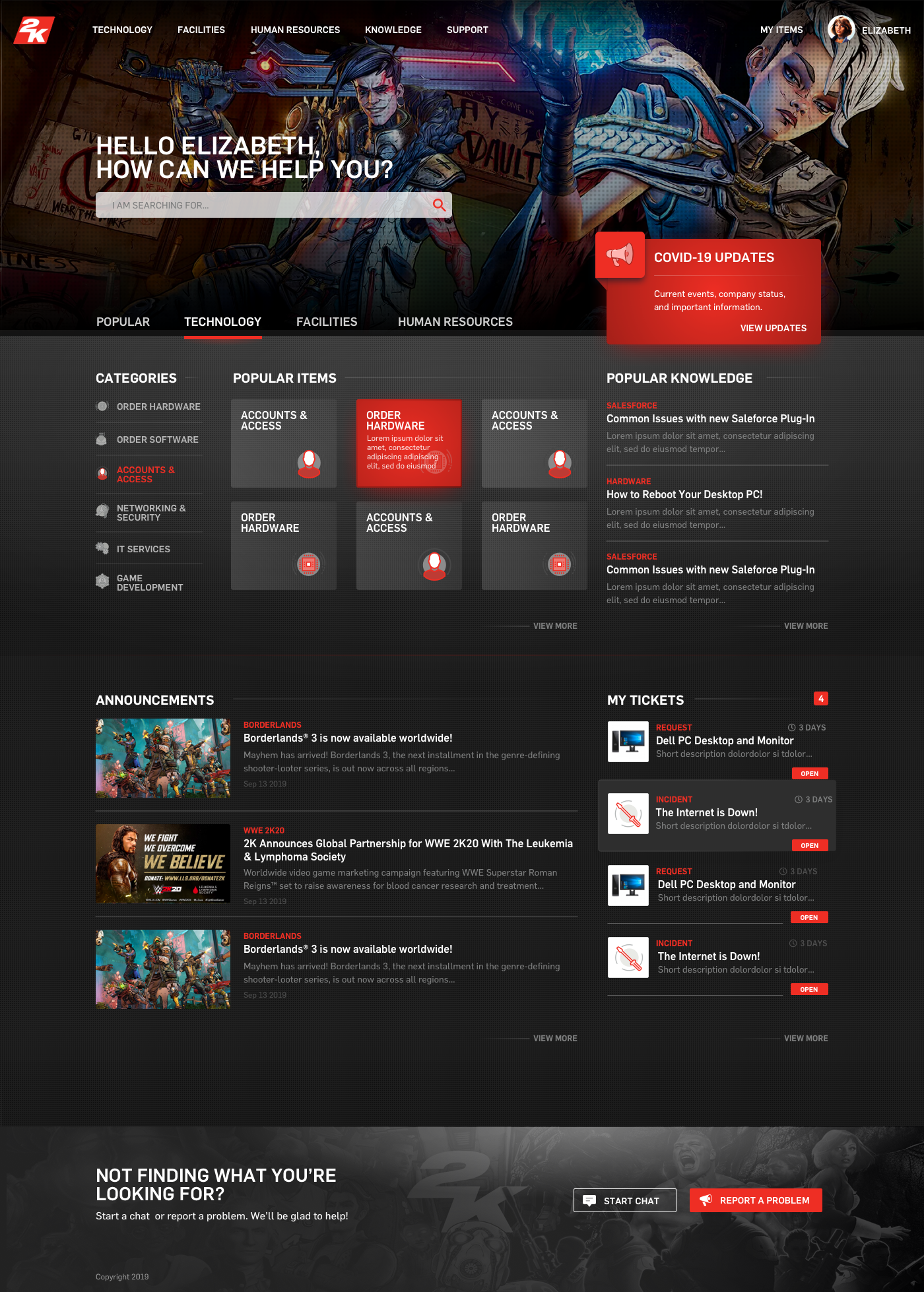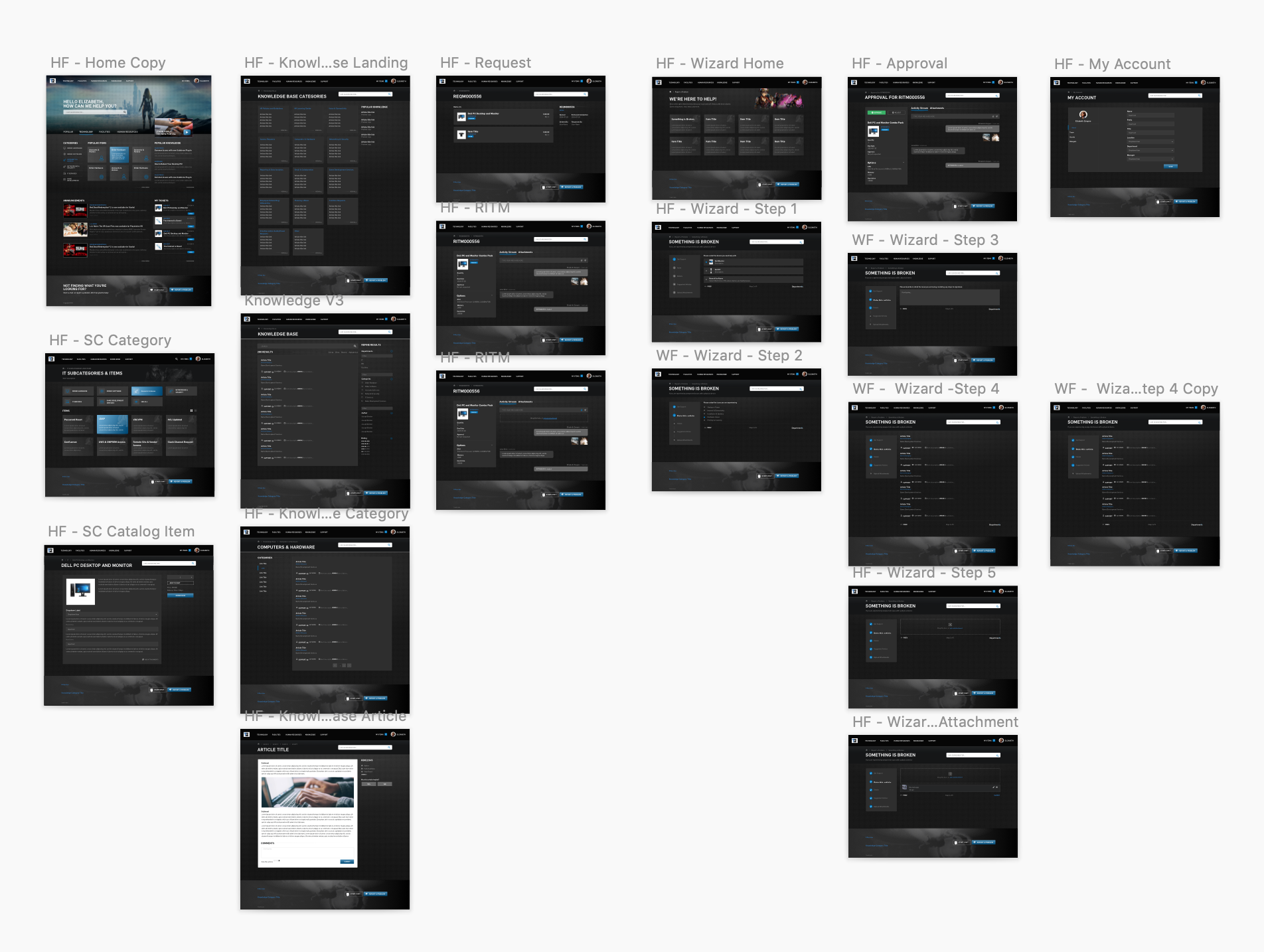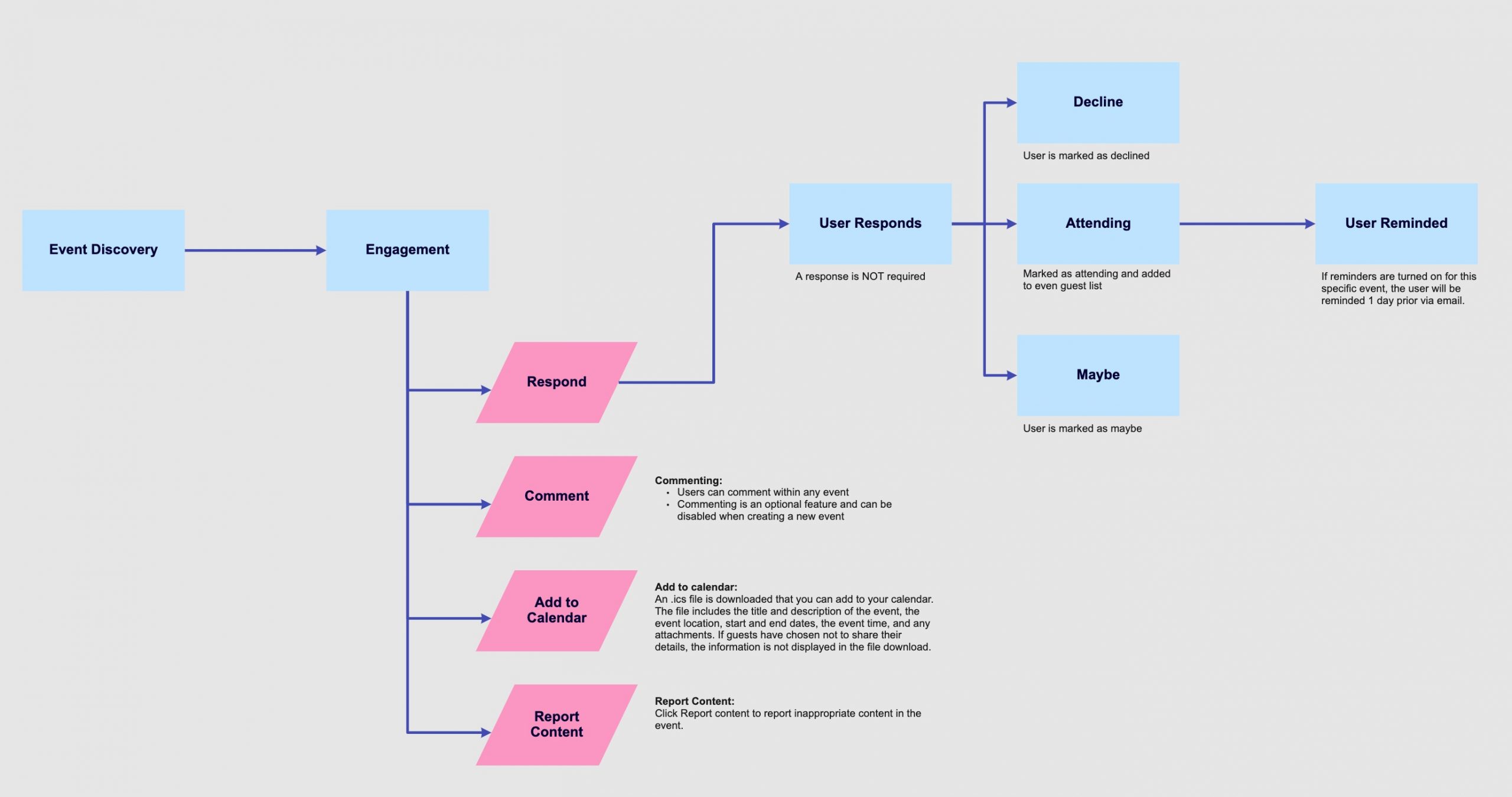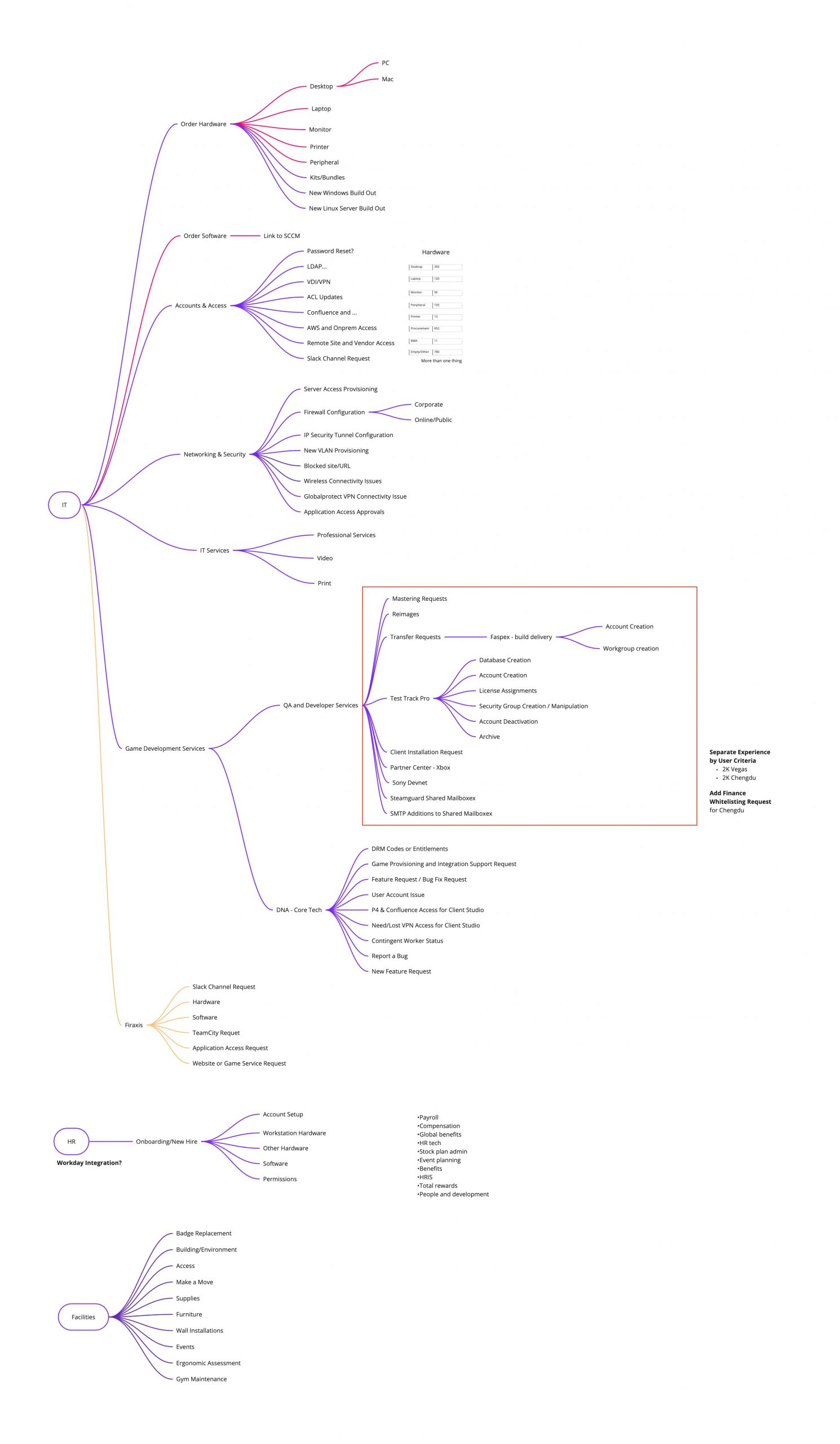Take2 Games is one of the largest video game producers in the United States. They are the parent to companies like 2k Games, Rockstar, Private Division, and Social Point. They are publicly traded, generate $3 Billion in revenue per year, and have 5,214 employees around the world.
The Client
Technical Constraints
They chose ServiceNow, as their workflow management, service portal, and knowledge platform, to drive organizational, operational, and technical change and asked my team to help define the enterprise user experience leveraging this new technology.
The Challenges
Consolidation and Communication
The users experienced significant tool confusion due to the many disparate systems and tools for knowledge, catalog, incidents, and IT service management.
Self-Service Adoption to Reduce Bottom Line Costs
Their user base primarily used e-mail and phone to solicit technical information, submit requests and track progress of requests.
User Experience Content Organization and Management
Content and experiences were distributed across multiple sources and were managed and updated inconsistently, creating confusion and lack of adoption.
Goal: To integrate tech stacks and operations of multiple employee portals onto one platform and one team.
Goal: Transition users from unstructured and untraceable e-mail and chat (Teams) to ServiceNow Request/Fulfill system and demonstrate self-service ROI to CTO.
Goal: Create an intuitive centralized employee and content management experience to demonstrate value of the new portal and drive self-service
Responsibilities
-
Establish timeline and process based on budget
-
Lead strategy, design team, and managed budget
-
Collaborate with engineering to navigate technical constraints
-
Stakeholder interviews to discover and define requirements
-
Evaluation of current platform UX implementation
User Definition
Their user-base consists of corporate employees, across multiple business units, in various locations around the world. At a minimum, users from each business unit (Take2, 2K, RockStar, etc.) would see segmented branding, catalog of services, and knowledge base. There were 3 groups identified, Requestors, Fulfiller, and Approver. Within the requestor group, there were 2 sub-groups, the general enterprise user and the help desk user. The general enterprise requestor was identified as the primary consumer of the digital workplace. The fulfiller and approver journeys were secondary priorities and considered largely out of scope.
User Flows & Journeys
Users came to the site to:
- Find and Request a product or service that is fulfilled by another department,
- Report to another department something has gone wrong, or
- Consume information to resolve something themselves or share with someone else.
- Register and track status of events
Information Architecture
I led the team in conducting a series of on-site workshops to educate and facilitate content creation exercises utilizing the new platform and administration constraints. We took an e-commerce approach with the stakeholders acting as suppliers, defining their own service offerings to be included on the portal. We identified multiple internal tools that will either require integration or conversion to ServiceNow including SCCM, Confluence, Arcade, Office Forms, and Demisto.
In addition to the service catalog, I guided them through Knowledge Base, knowledge article, and taxonomy exercises. The knowledge articles encourage users to help themselves whenever possible rather than submitting service requests.
Based on data gathered from these workshops, I created a recommended hierarchical taxonomy for their catalog of services and a separate taxonomy for their knowledge base.
Wireframes

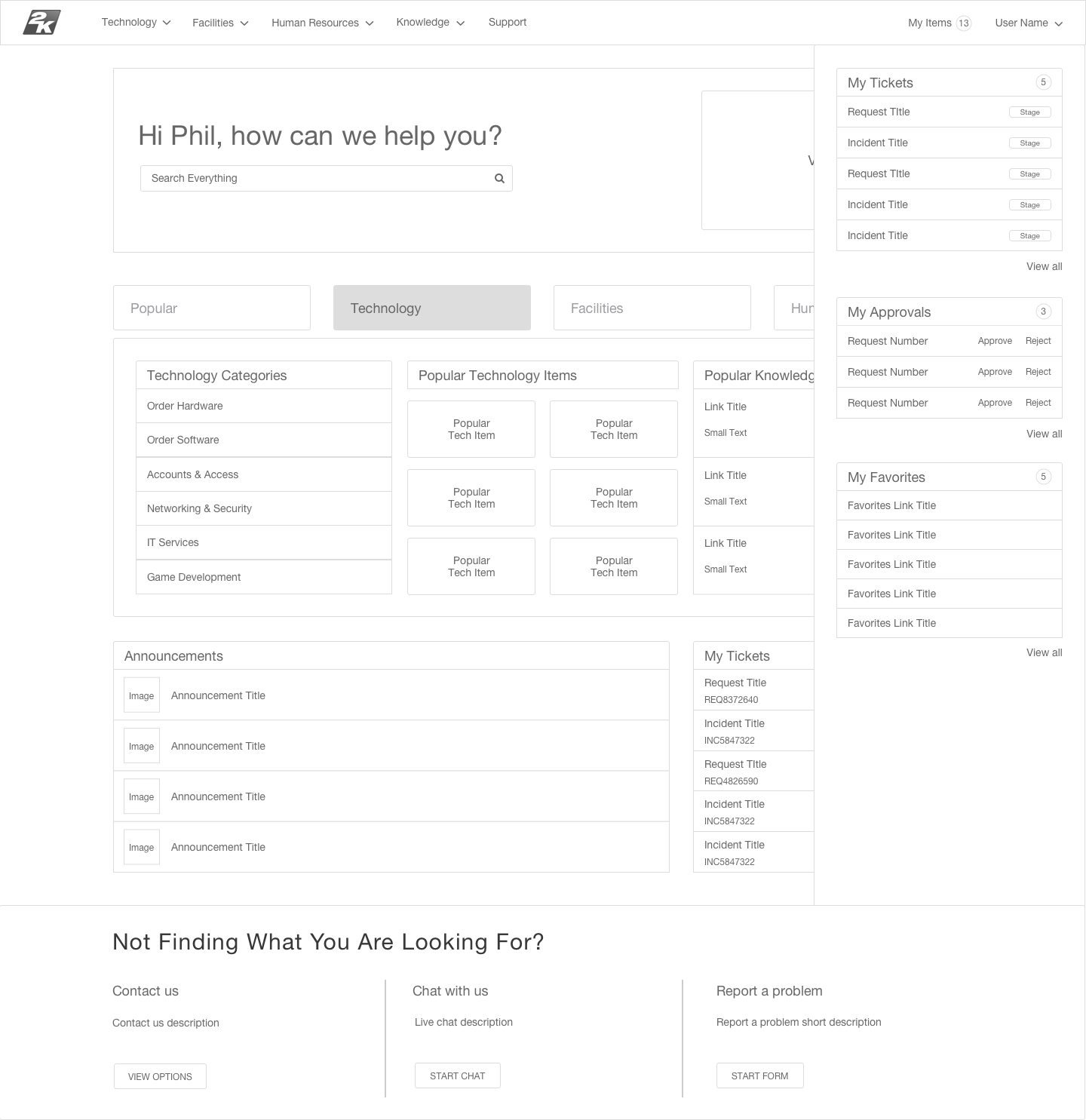

Design

